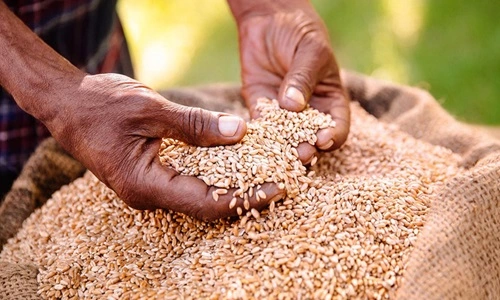Barley is a form of cereal grain known as “jau” in India. It plays a significant role in the country’s agricultural landscape. While not a major food source for humans but it serves many other production elements like making beer and food for animals. India belongs to the top 24 countries that grow Barley, the leaves, seeds, and kernels of which are significant for the cooking process, and the country consists of several states that show high contribution in the market. The question we want to look at today is what is the top 5 largest barley producing states of India? Lets explore

1. Rajasthan
Rajasthan, with its leading open space and climate, makes it possible. The agricultural region consists of an arid and semi-arid part that is most suitable for the growth of Barley. In Rajasthan, I am reminded of districts like Jodhpur, Nagaur, and Bikaner, which are well-recognized for their substantial barley production. Similarly, using advanced farming systems and breeding Barley with higher yields is a key feature in the state.
2. Uttar Pradesh
The state of Uttar Pradesh is at the traversing point where people can identify it as the place where the nation yields the maximum amount of Barley because it has diversified agro-climatic zones and a great area for farming. The earthen wombs of the plains and widespread rainfall in places like Meerut, Muzaffarnagar, and Baghpat double the chance of everyone growing the crop Barley. The eco-friendly, people-friendly reforms in Uttar Pradesh have boosted the production of excellent barley varieties, bringing about the situation where Barley has utterly tilted the balance in favor of barley production in the state.
3. Punjab
Punjab, also known as the “queen of grains,” is essentially the barley giant of our country. The state has soil to grow and is equipped with a good irrigation system, making it a country with a high possibility of barley yield. Regions like Ludhiana, Patiala, and Sangrur are seeing a reversal of rice-barley cultivation in the state. Additionally, the emphasis of the Stripev which is the crop diversification and its modernization naturally increases the barley yield.
4. Madhya Pradesh
MP comes to the foreground as the second mainstay in barley cultivation, with the greatest agricultural land and prime agro-climatic conditions. Barley production thrives in M.P. because the state is one of the prime lands and the fertile soils. Barley is particularly seasonal in Bhopal and Vidisha districts along Sehore, while Madhya Pradesh produces an enormous amount. In addition, elaborate methods in tillage or cultivation and government support intensify a harvest of Barley in the state.
5. Haryana
Farmers from Haryana are stronger because of its alluring soil; the state has many amenities conducive to the growth of agricultural activities. The state’s strategically placed irrigated fields and improved farming techniques allow the cultivation of Barley in the Marchwassa districts of Karnal, Kurukshetra, and Ambala. The role of the state government, which is trying to introduce crop diversification programs and increase agricultural output, also includes serving in this movement.
Conclusion:
Barley production in India is representative of the country’s agricultural diversity and the farmers’ struggle to resolve the defensive food craving. As guides, the five principal producing states in Barley- Rajasthan, Uttar Pradesh, Punjab, Madhya Pradesh, and Haryana – contribute significantly to this essential sector. Due to the bounteous and climatically friendliness, well-established farming practices, and government interventions, these states are still major players in Barley’s cultivation, which guarantees food security and economic growth.
FAQs:
Q1. How is Barley employed in India, and what is it for?
Ans: The versatile Barley constitutes a wide spectrum of uses in India, from humans as food to fodder for livestock. It is also the main ingredient in beer and high-quality distillation.
Q2. What is the significance of Barley’s beverage production in these states to farmers?
Ans: Barley farming assures the farmers with income sources in multiple ways, crop diversity avails, and livestock gets special fodder. Besides, barley domestication also contributes to soil fertility management and water-saving procedures.
Q3. What barriers do barley growers in these states encounter?
Ans: Uncertainty in market prices, protection against pests and diseases, and water use for irrigation are significant issues confronting barley farming. Furthermore, climate change projections and severe weather events are significant issues.
Q4. Is there any specific government activity targeted at promoting the development of barley farming, and if so, what are these activities?
Ans: Yes, the government has many schemes, such as the NFSM for Coarse Cereals and the PMFBY for barley farmers, to minimize the financial losses of these farmers in case of crop failure. These schemes aim to increase efficiency, establish crop insurance, and help with the financial assistance of the farmers.

